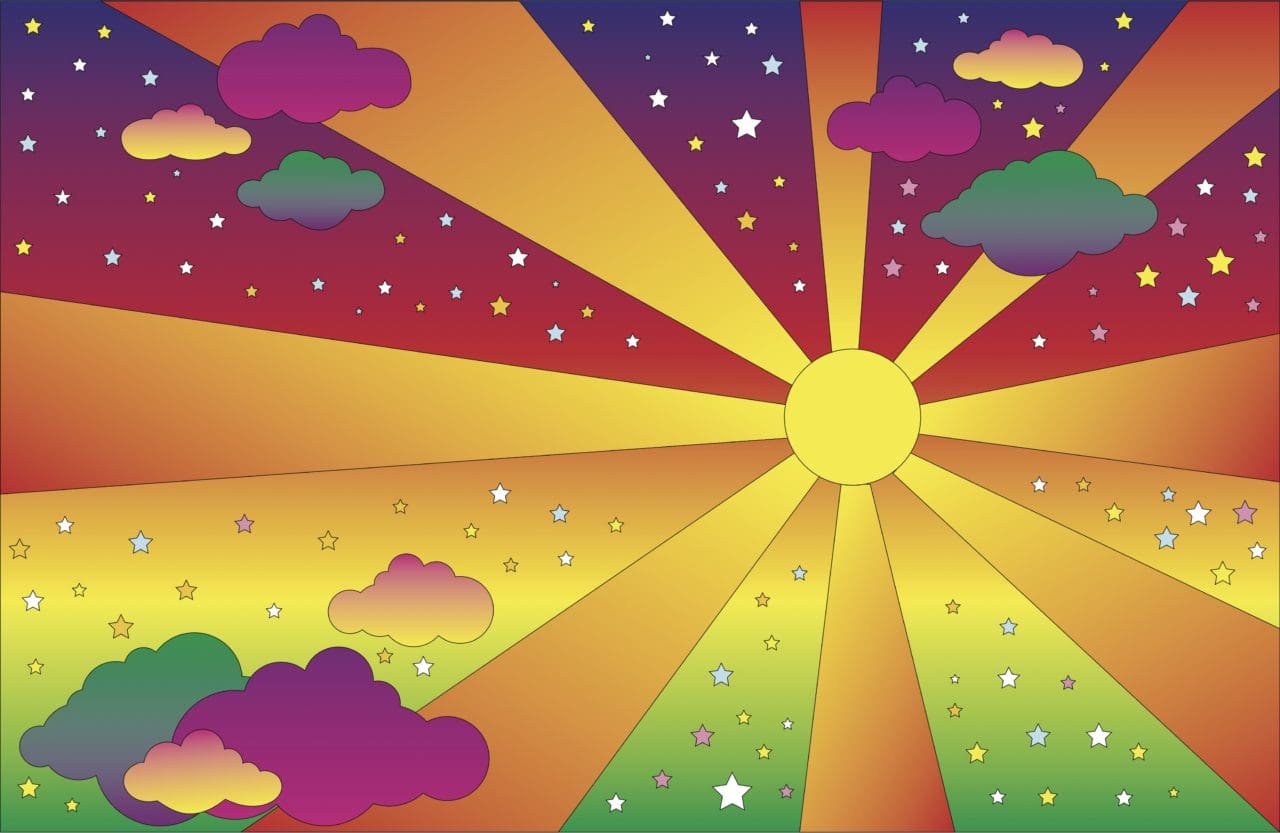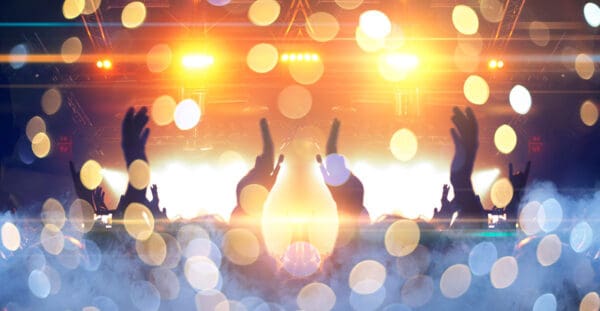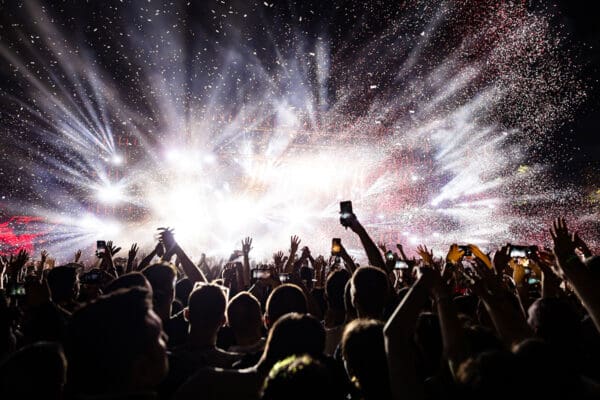Psychedelic Art of the 60s
The aesthetic of most psychedelic art created during the 1960s counterculture movement is so distinct and iconic that even those who weren’t alive at that time can identify it. Many creative works produced during an era well-known for artists who were inspired by their mystical experiences with psychedelics are still relevant and recognized in popular culture to this day.
In an attempt to depict the visual and auditory effects, sensations, experiences, and insights that occur when experimenting with psychedelic substances such as lysergic acid diethylamide (LSD) and psilocybin (the psychoactive compound in magic mushrooms), many visual and performance artists, musicians, and authors redefined some of the previously restrictive definitions of value in art.
Here is a brief overview of psychedelic art, its rise to prominence in popular culture, and the lasting impact it has had on the world’s view of artistic expression from the 1960s and beyond.
What is psychedelic art?
The term ‘psychedelic’ was coined by a psychologist named Humphrey Osmond. Rooted in Greek, it translates to mean mind-manifesting. Technically, any art that attempts to illustrate the inner workings of the mind could be called psychedelic. However, the term is almost always applied to art inspired by the hallucinogenic effects of psychedelic substances such as LSD and magic mushrooms (psilocybin). Psychedelic art is most often associated with an aesthetic that emerged during the 1960s counterculture movement.
Psychedelic art is not specifically defined by a certain look, style, or time period. However, there are some common aesthetic themes, particularly relating to the visual and sensory experiences evoked by psychedelic experiences. This genre of art is unique in that it is the inspiration behind it connecting works to other pieces. However, most iconic psychedelic art was created during the psychedelic heyday of the 1960s.
Iconic visual displays
Known as psychedelia, this genre of art features imagery that is brightly technicolored, dripping, bubbling, distorted, otherworldly, and full of stunning enchantment. Psychedelia stood in defiance to the rigid expectations of traditional fine art, as well as the social and political norms that members of the counterculture movement protested believing these institutions stifled personal freedom. Visible on everything from posters, album covers, print media, clothing and accessories, advertising, and street art, the influence of psychedelic culture permeated a wide variety of mediums.
San Francisco poster art, specifically for the music scene, is probably the most recognizable manifestation of psychedelic art. Bonnie MacLean, Rick Griffin, Wes Wilson, and Victor Moscoso were a few that made names for themselves creating iconic poster art for unforgettable musical groups like The Grateful Dead, The Yardbirds, The Doors, and James Colton Blues Band, many of whom started as local legends on Haight Ashbury.
Live psychedelic art also came in various forms like liquid light shows, where colored mineral oils mingled and transformed when mixed with alcohol and water, which were placed in bowls over a light projector to display the movement and changes in real-time. This method was used to accompany music and artistic performances such as theatre and dance. It has recently experienced a revival with the resurgence of the psychedelic rock genre and an appreciation of the counterculture movement among young people today.
Literature and poetry
Psychedelic art isn’t limited to visual or auditory forms. As artists of the 1960s were openly exploring psychedelics as a means to access greater depths to their creativity, so were authors and beat poets as early as the 1940s, such as William S. Borroughs and Allen Ginsberg. Ginsberg, in particular, was so convinced of psychedelics’ transformative potential that he urged a group of Unitarian Christian leaders to “…try the chemical LSD at least once…then I prophecy we will all have seen some ray of glory or vastness beyond our conditioned social selves, beyond our government, beyond America even, that will unite us into a peaceful community.”
Timothy Leary was a psychology professor at Harvard during the counterculture movement of the 1960s and one of the most well-known advocates for psychedelic experimentation at the time. He was a powerful driving force in the widespread embrace of psychedelics among intellectuals and promoted those in the literary spotlight such as Ginsberg.
Music
Though every facet of psychedelic art produced in the 1960s has had a lasting impact on modern culture, the influence of psychedelics on popular music of the era is continuously relevant and recognizable.
To mimic the effects of psychedelics, musicians broke from traditional norms in recording and experimented with distortion, reverberation, unconventional time signatures, song structure and chord changes. Repetitive and extended sequences reproduced the experience of a trance-like state, while echoes and unexpected effects created an auditory illustration of the musicians’ own psychedelic experiences, with the intent of reviving them through the listener.
The 13th Floor Elevators was the first group to officially define their style as “psychedelic rock,” but many others were quick to follow suit. Most people recognize psychedelic influences during a certain period of popularity. ‘Revolver’ by The Beatles is an exemplary work for the genre. Other notable icons include Jefferson Airplane, Jimi Hendrix, The Doors, Janis Joplin, The Grateful Dead, and The Rolling Stones.
What is now common practice within the rock and alternative genres today was unprecedented at the time and seen as a wild diversion from respectable standards. The wide array of distortion and effect pedals, amplifiers with built-in reverb, feedback, tone knobs, and guitars specifically designed for alternative tunings and chords are all a direct result of a market created by some of the most innovative musicians in popular music during the 1960s.
Closing thoughts
There are few decades in modern history that have produced as memorable works of art as the 1960s did. The distinct characteristics and brave defiance of cultural norms changed art and music forever, helping to shift the perspective surrounding what makes art valuable and meaningful.
The lasting impacts of 1960s psychedelic art endure to this day, as it paved the way for greater freedom, creativity, inclusion, and inspiration in the art and music we enjoy today.









